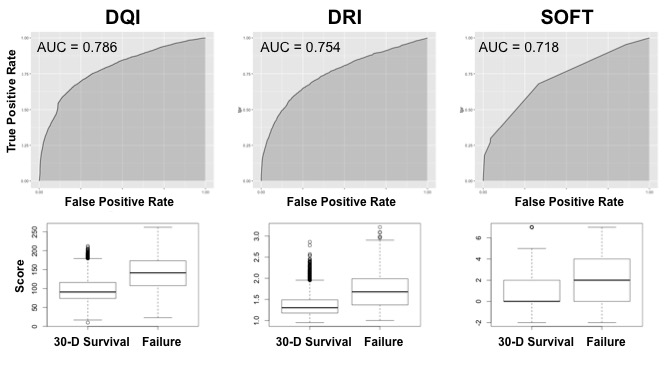Variables Associated with Liver Graft Utilization and 30-Day Failure: A Liver Graft Quality Index.
1Statistics, University of California, Los Angeles, CA
2Surgery, University of California, Los Angeles, CA
Meeting: 2017 American Transplant Congress
Abstract number: C180
Keywords: Donation, Graft acceptance, Graft failure
Session Information
Session Name: Poster Session C: Organ Allocation, Meld Score, Organ Utilization, and Transplant Outcomes
Session Type: Poster Session
Date: Monday, May 1, 2017
Session Time: 6:00pm-7:00pm
 Presentation Time: 6:00pm-7:00pm
Presentation Time: 6:00pm-7:00pm
Location: Hall D1
The quantitative evaluation of liver graft quality remains one of the most understudied clinical problems in transplantation. A few scoring systems have been proposed, but they are infrequently used. The gold standard remains physical evaluation by transplant surgeons. Using data from SRTR encompassing all UNOS donors from 10/02/1987 date to 6/30/2015, we looked for predictors of 30-day graft survival. We excluded donation after cardiac death, partial/split grafts, and donors less than 18 years old and used only data from the donor available prior to procurement. Logistic regression models identified fourteen independent donor characteristics correlated with risk of 30-day graft failure: donor lipase, amylase, left ventricular ejection fraction, KDPI, pO2, total bilirubin, blood type, antihypertensive use, blood infection, mechanism of death, diuretic use, ethnicity/race, inotropic agent use, and intracranial cancer. We then developed a quantitative donor quality index (DQI). While DQI, DRI, and SOFT scores were all able to predict 30-day graft failure with statistical significance using only pre-procurement donor data, DQI had the highest AUC (Figure).  We also evaluated these scoring indices in their ability to predict liver graft utilization from all consented adult donation after brain death donors. DQI also had the highest AUC (0.61 versus 0.58 for DRI and 0.56 for SOFT). A validated quantitative index of the quality of donor liver grafts would provide transplant physicians with reliable, objective information on liver grafts to make decisions on utilization and recipient matching.
We also evaluated these scoring indices in their ability to predict liver graft utilization from all consented adult donation after brain death donors. DQI also had the highest AUC (0.61 versus 0.58 for DRI and 0.56 for SOFT). A validated quantitative index of the quality of donor liver grafts would provide transplant physicians with reliable, objective information on liver grafts to make decisions on utilization and recipient matching.
CITATION INFORMATION: Tang J, Esfandiari M, Zarrinpar A. Variables Associated with Liver Graft Utilization and 30-Day Failure: A Liver Graft Quality Index. Am J Transplant. 2017;17 (suppl 3).
To cite this abstract in AMA style:
Tang J, Esfandiari M, Zarrinpar A. Variables Associated with Liver Graft Utilization and 30-Day Failure: A Liver Graft Quality Index. [abstract]. Am J Transplant. 2017; 17 (suppl 3). https://atcmeetingabstracts.com/abstract/variables-associated-with-liver-graft-utilization-and-30-day-failure-a-liver-graft-quality-index/. Accessed December 17, 2025.« Back to 2017 American Transplant Congress
